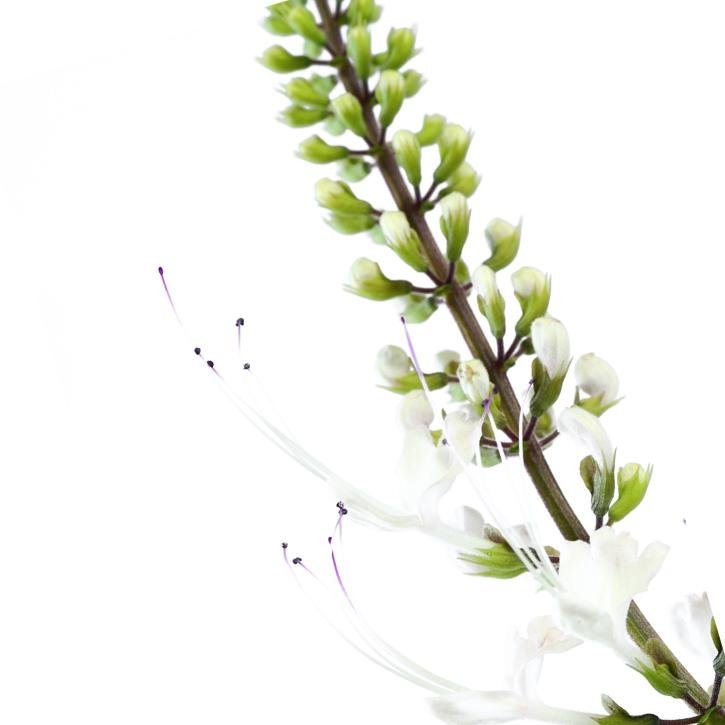Description
It’s a perennial plant of up to 60 cm high with a quadrangular, barely branched stem and decussate leaves with a short petiole. Limb is oval-shaped, sharp and a little asymmetric at the base. Sharp pointy leaves have a serrate margin; veins are purplish the same as the petiole. Inflorescences are terminal with flower spikes and a small calyx. The corolla is white or purplish-blue tubular and bilabiate. Flowers are grouped in verticils with four purplish-blue stamens of up to 3 cm long and a same length style. Fruit is a rugose oblong tetrachene.
It is indigenous of southeastern Asia and goes all the way to Australia and has been introduced to South America. It is cultivated in Indonesia, as well, which is its main exporting country.
Part used
Leaves and flowering tops.
Indications
- Genitourinary infections: cystitis, urethritis.
- To increase diuresis in case of oliguria, edemas, ascites or hypertension.
- Arthritis, arthralgia, gout.
- Renal lithiasis.
- Biliary dyskinesia.
- As a complementary supplement in treatments for weight loss.
Bibliography
- Real Farmacopea Española, Suplemento 2000.
- Plantas Medicinales. Thérapeutique-Toxicité. Christiane Vigneau. Masson, Paris 1985.
- Herbal Drugs and Phytopharmaceuticals. Norman Grainger Bisset (Ed). Max Wichtl. CRC Press.1994.
- Plantas Medicinales y Drogas Vegetales para infusión y tisana. Edición española a cargo de: Salvador Cañigueral, Roser Vila, Max Wichtl.1998.
- Fitoterapia Aplicada. J.B. Peris, G. Stübing, B.Vanaclocha. Colegio Oficial de Farmacéuticos de Valencia 1995.
- Fitoterapia: Vademecum de Prescripción. Plantas Medicinales. B.Vanaclocha, S. Cañigueral. Editorial Masson, 4ª edición.
- Plantas Medicinales. Margarita Fernandez y Ana Nieto. Ed Universidad de Navarra. EUNSA 1982.
- 100 Plantes Medicinales. Max Rombi. Romart 1998.
- Catálogo de Plantas Medicinales. Consejo General de Colegios Oficiales de Farmacéuticos. 2003.
